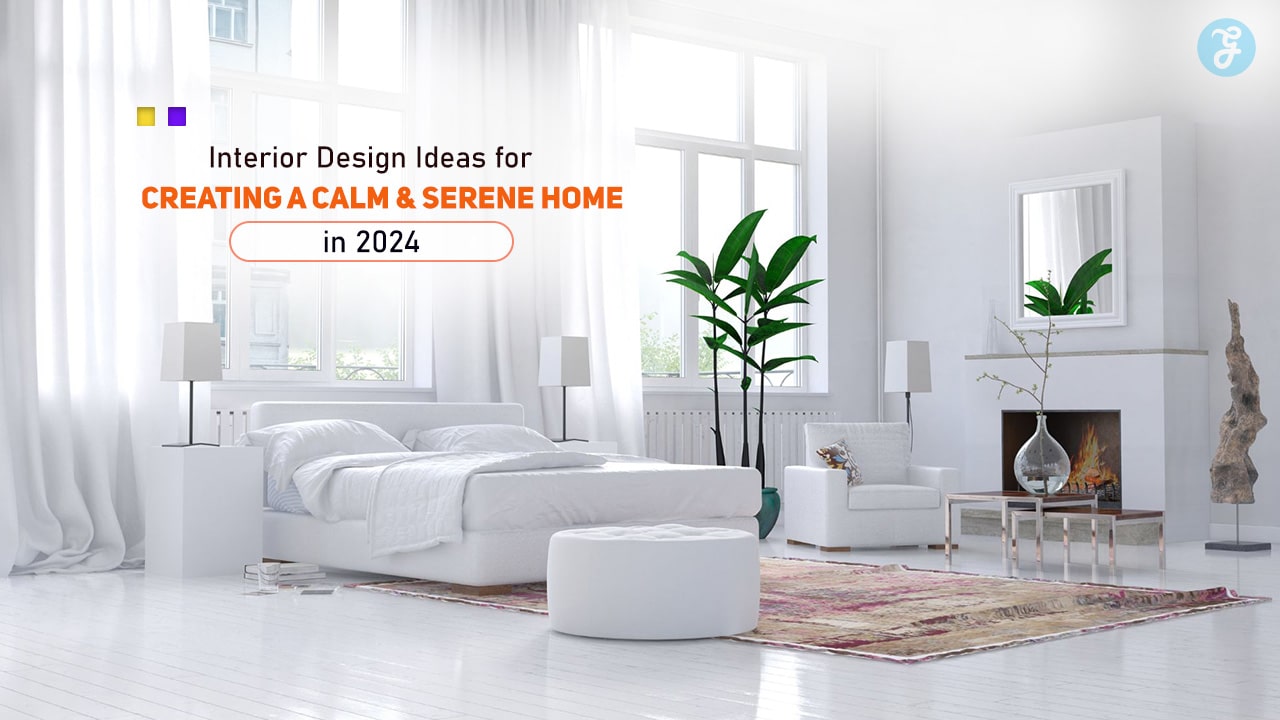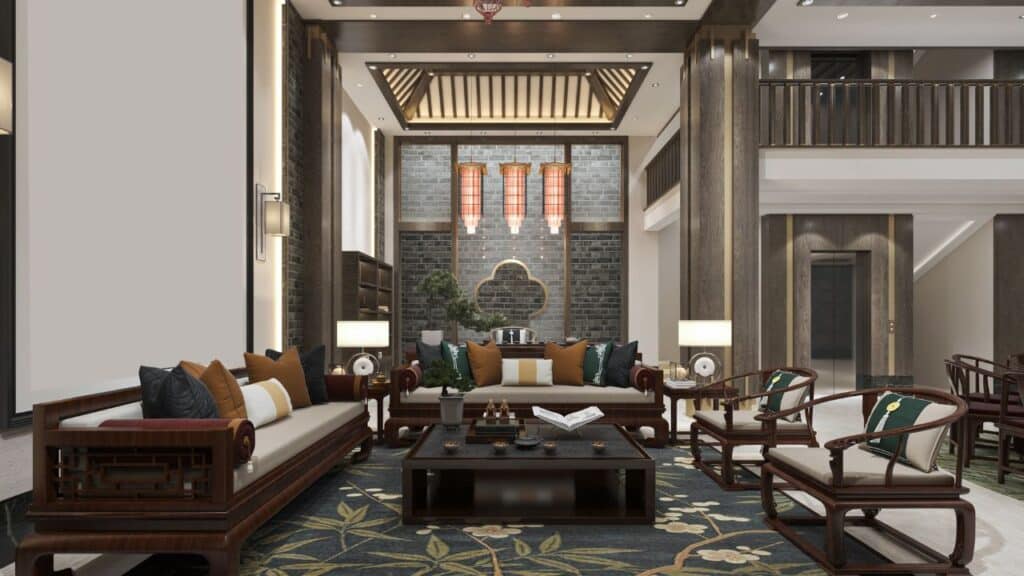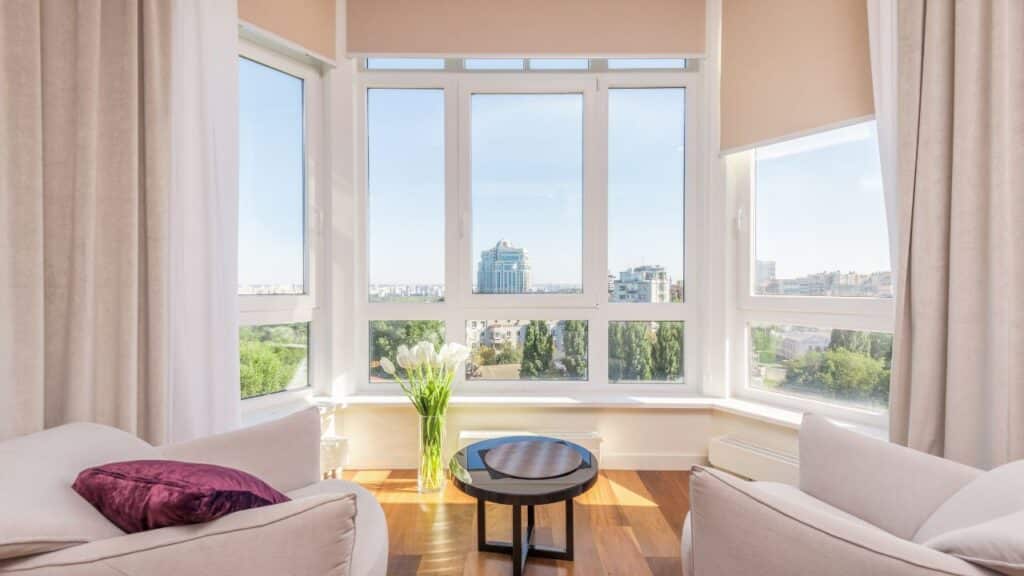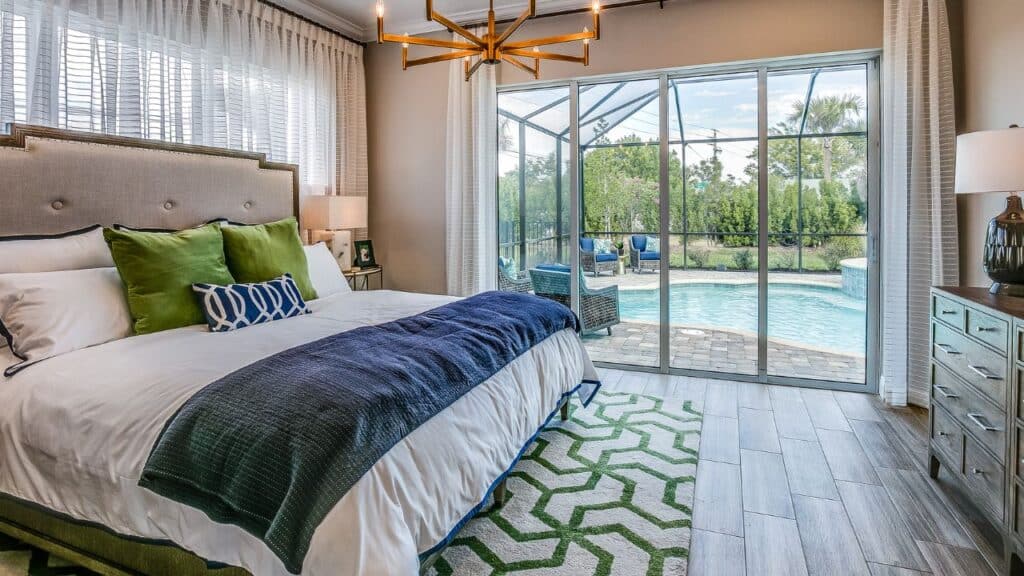Creating a calming home environment is essential for relaxation and well-being, especially as daily lives become more fast-paced.
In 2025, interior design trends are shifting towards simplicity, tranquility, and natural elements that help create a peaceful retreat right at home.
Whether you’re looking to redesign an entire room or add a few touches to your existing space, these seven design ideas will help you transform your home into a serene sanctuary.
7 Interior Design Ideas for Creating a Calm and Serene Home
Let’s get straight into it!
1. Embrace Soothing Color Palettes
One of the most effective ways to create a calm home environment is through the strategic use of color.
In 2025, the trend leans toward gentle, earthy tones, soft neutrals, and nature-inspired hues that exude calmness.
Think of shades like sage green, sandy beige, warm grays, and muted blues.
These colors evoke the tranquility of nature, helping to create a grounded and peaceful ambiance within your home.
Why It’s Effective:
Color has a psychological impact on mood and emotions.
Soft, muted tones create a restful visual experience, reducing stimulation and helping the mind relax.
Unlike bright, bold colors, which can be energizing or overwhelming, serene colors gently set the tone for a calm atmosphere.
How to Implement It:
Consider painting your walls in a calming shade or adding accent colors through decor like rugs, cushions, or curtains.
For a balanced look, pair a primary neutral with one or two accent colors to maintain a cohesive theme without overwhelming the senses.
2. Incorporate Natural Materials
Natural materials are at the heart of serene home decor.
Materials like wood, bamboo, linen, rattan, and stone are not only visually calming but also help create a tactile experience that adds warmth to a space.
In 2025, the use of organic, eco-friendly materials is trending as they bring a touch of the outdoors inside, helping to establish a harmonious and tranquil environment.
Why It’s Effective:
Natural materials ground and create a connection to nature, which is known to lower stress levels and promote relaxation.
These materials add texture and warmth, breaking up stark spaces and making rooms feel more welcoming and lived-in.
How to Implement It:
Consider introducing wooden furniture, rattan baskets, or a jute rug to your space.
Stone accents, such as a marble coffee table or terracotta vases, add an earthy feel.
Soft linens and cotton for throws and pillows also create a tactile comfort that enhances relaxation.
3. Optimize Natural Lighting
Natural lighting has a profound impact on the ambiance of a space.
In 2025, design trends emphasize maximizing natural light to create an uplifting and soothing environment.
Sunlight not only enhances mood but also provides a healthy dose of Vitamin D, which is essential for overall well-being.
The key is to allow as much natural light as possible to flow into your home and to layer it with soft, warm artificial lighting for the evenings.
Why It’s Effective:
Natural light regulates your body’s circadian rhythm, helping you stay energized during the day and relaxed at night.
Sunlight also makes spaces feel larger and airier, which contributes to a calming, open atmosphere.
How to Implement It:
Replace heavy, dark curtains with lighter, sheer fabrics to allow sunlight to filter through.
Use mirrors strategically to reflect natural light and brighten up darker corners.
For rooms with limited natural light, opt for warm, soft artificial lighting and layer with floor lamps and table lamps for a cozy glow in the evening.
4. Declutter for a Minimalist Look
Minimalism is not only about aesthetics but also about creating a sense of mental clarity and calm.
In 2025, minimalist principles with a focus on intentionality, simplicity, and function will be heavily influencing interior design.
A clutter-free space allows for a more organized and spacious environment, where each piece has a purpose and contributes to a serene atmosphere.
Why It’s Effective:
Clutter can increase stress and make a space feel chaotic, which is counterproductive to a calming environment.
Minimalism encourages mindful choices and keeps spaces free from visual distractions, fostering a sense of peace and focus.
How to Implement It:
Start by decluttering and organizing your space, keeping only items that bring you joy or have functional value.
Use hidden storage solutions like built-in shelves, storage ottomans, or under-bed storage to keep items out of sight.
Choose decor pieces intentionally to maintain a clean and streamlined look without overcrowding.
5. Add Greenery and Indoor Plants
Plants are a powerful addition to any space aiming for tranquility.
Indoor plants add a refreshing, organic touch to interiors, purifying the air and adding a touch of color and vibrancy.
In 2025, the trend is to incorporate a mix of large statement plants like fiddle leaf figs or monstera plants and smaller options like succulents and air plants.
Why It’s Effective:
Plants have been proven to reduce stress and promote relaxation.
They improve indoor air quality and create a connection to nature, which enhances calmness.
The act of caring for plants also encourages mindfulness, which is beneficial for mental well-being.
How to Implement It:
Place a large potted plant in a corner or use a few smaller plants on shelves or tables.
Use hanging planters or wall-mounted plant shelves for additional greenery.
Easy-to-care-for plants like snake plants, pothos, or spider plants are perfect for beginners and add a lush feel to any space.
6. Use Soft, Textured Fabrics
Soft, textured fabrics are essential for creating a cozy, serene home.
In 2025, the focus is on incorporating materials like cotton, wool, and linen that provide comfort and warmth.
These fabrics add depth and softness to your living space, creating a tactile experience that promotes relaxation and coziness.
Why It’s Effective:
Textures create sensory experiences that contribute to a calming atmosphere.
Soft, plush fabrics encourage relaxation by adding a physical comfort that is both inviting and warm, ideal for bedrooms and living rooms where comfort is paramount.
How to Implement It:
Layer your seating area with plush throw blankets, woolen pillows, and soft rugs.
Consider using linen bedding in neutral tones for a calming effect in the bedroom.
For added texture, choose curtains in fabrics like linen or cotton to complement the softness of the space.
7. Create a Dedicated Relaxation Zone
A dedicated relaxation area within your home can serve as a personal retreat for unwinding and recharging.
This trend is gaining traction in 2025, as more people seek mindful spaces for activities like meditation, reading, or even practicing yoga.
Creating a corner or nook that’s entirely dedicated to relaxation can provide a mental escape and help you focus on self-care.
Why It’s Effective:
Having a designated area for relaxation helps establish routines that encourage mental clarity and emotional balance.
It serves as a daily reminder to take time for yourself, reducing stress and promoting a sense of calm in your routine.
How to Implement It:
Choose a quiet corner with good natural lighting, and furnish it with a comfortable chair, floor cushions, or even a small bench.
Add calming elements like scented candles, essential oil diffusers, or soft music.
Use calming colors and textures in this space, and keep it clutter-free for a peaceful, distraction-free environment.
Bringing It All Together: Designing a Calming Home in 2025
Incorporating these seven design ideas into your home can help create a serene, welcoming environment where you can escape from the stresses of everyday life.
From using soothing colors and natural elements to creating dedicated spaces for relaxation, each element works together to cultivate peace and calm in your living space.
Embrace these calming trends for a harmonious home that nourishes both mind and body, creating a sanctuary that brings comfort and rejuvenation every day.







































